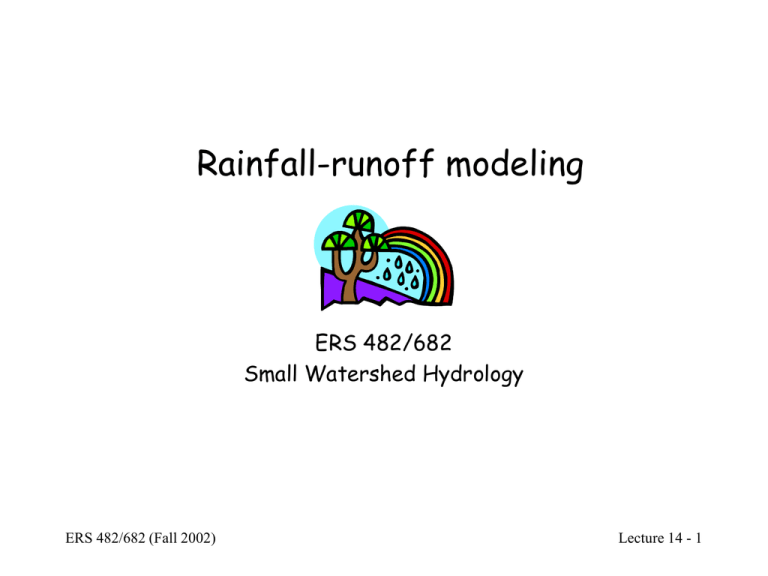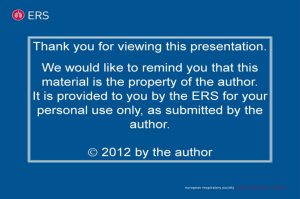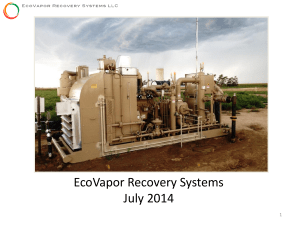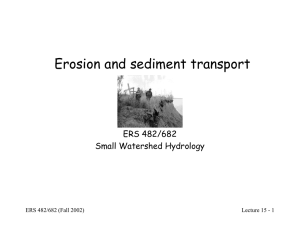Lecture 14
advertisement

Rainfall-runoff modeling ERS 482/682 Small Watershed Hydrology ERS 482/682 (Fall 2002) Lecture 14 - 1 What are models? • A model is a conceptualization of a system – In hydrology, this usually involves the response of a system to an external stimuli rainfall ERS 482/682 (Fall 2002) runoff (discharge) Lecture 14 - 2 What are models? • A model is a conceptualization of a system – In hydrology, this usually involves the response of a system to an external stimuli • Models are tools that are part of an overall management process ERS 482/682 (Fall 2002) Lecture 14 - 3 Data collection Management objectives, options, constraints Make management decisions Model development and application ERS 482/682 (Fall 2002) Lecture 14 - 4 Why model? • Systems are complex ERS 482/682 (Fall 2002) http://water.usgs.gov/outreach/OutReach.html Lecture 14 - 5 Why model? • Systems are complex • If used properly, can enhance knowledge of a system • Models should be built on scientific knowledge • Models should be used as ‘tools’ ERS 482/682 (Fall 2002) Lecture 14 - 6 Rules of modeling • RULE 1: We cannot model reality – We have to make assumptions • DOCUMENT!!!! • RULE 2: Real world has less precision than modeling ERS 482/682 (Fall 2002) Lecture 14 - 7 Precision vs. accuracy • Precision – Number of decimal places – Spread of repeated computations • Accuracy – Error between computed or measured value and true value error of = field error + model error estimate ERS 482/682 (Fall 2002) Lecture 14 - 8 The problem with precise models… we get more precision from model than is real ERS 482/682 (Fall 2002) Lecture 14 - 9 Fundamental model concepts DRIVER area topography soils vegetation land use etc. RESPONSE ERS 482/682 (Fall 2002) SYSTEM REPRESENTATION Q Lecture 14 - 10 Basic model DRIVER Mathematical equations and parameters RESPONSE SYSTEM REPRESENTATION ERS 482/682 (Fall 2002) Lecture 14 - 11 The whole world The model world Figure 9-37 (Dingman 2002) ERS 482/682 (Fall 2002) Lecture 14 - 12 Runoff processes to model Table 9-8 (Dingman 2002) Small watershed ASSUMPTION! ERS 482/682 (Fall 2002) Lecture 14 - 13 Effective water input, Weff • Effective (excess) rainfall – Does not include evapotranspiration or ground water storage that appears later Weff Qef ASSUMPTION! Weff W ET S c D where ASSUMPTION! ET = event water evapotranspired during event usually small Sc = canopy storage during event antecedent D = depression storage during event soil-water = soil-water storage during event content, 0 ERS 482/682 (Fall 2002) Lecture 14 - 14 constant fraction initial abstraction ERS 482/682 (Fall 2002) Estimating Weff constant rate infiltration rate Figure 9-40 (Dingman 2002) Lecture 14 - 15 Estimating Weff • SCS curve-number method W 0.2Vmax 2 Weff initial abstraction W 0.8Vmax where Vmax = watershed storage capacity [L] W = total rainfall [L] Figure 9-42 (Dingman 2002) ERS 482/682 (Fall 2002) Lecture 14 - 16 Estimating Weff • SCS curve-number method W 0.2Vmax 2 Weff W 0.8Vmax 1000 10 where Vmax = watershed storage CN capacity [inches] W = total rainfall [inches] Based on land use in Table 9-12, soil group in Table 9-11, and soil maps from NRCS ERS 482/682 (Fall 2002) Lecture 14 - 17 From NRCS soils maps and GIS Example 9-6 Table 9-12 Land cover Soil group Area (mi2) Forest B 0.72 0.58 58 Forest C 0.15 0.12 72 Meadow A 0.26 0.21 30 Meadow B 0.11 0.09 58 Given: W = 4.2 in TW = 3.4 hr A = 1.24 mi2 L = 0.84 mi S = 0.08 ERS 482/682 (Fall 2002) Fraction of Condition total area II CN CN 0.5858 0.1272 0.2130 0.0958 54 1000 Vmax 10 8.52 inches 54 2 4.2 0.2 8.52 Weff 0.57 inches 4.2 0.8 8.52 Lecture 14 - 18 Example 9-6 Table 9-13 Land cover Soil group Area (mi2) Forest B 0.72 0.58 58 X 38 Forest C 0.15 0.12 X 53 72 Meadow A 0.26 0.21 30 X 15 Meadow B 0.11 0.09 58 X 38 Given: W = 4.2 in TW = 3.4 hr A = 1.24 mi2 L = 0.84 mi S = 0.08 ERS 482/682 (Fall 2002) Fraction of Condition total area I CN CN 35 Vmax 18.6 inches Weff 0.012 inches Lecture 14 - 19 SCS method for peak discharge inches ft3 s-1 ERS 482/682 (Fall 2002) mi2 484Weff AD q pk Tr hr Lecture 14 - 20 SCS method for peak discharge 484Weff AD q pk Tr Tr 0.5TW 0.6Tc From Table 9-9 ERS 482/682 (Fall 2002) Lecture 14 - 21 SCS method for peak discharge Example 9-7 484Weff AD q pk Tr Tc = 0.44 hr from Table 9-9 Tr 0.53.4 0.60.44 1.96 hr Given: W = 4.2 in 4840.57 0.57 TW = 3.4 hr 3 q 175 ft pk A = 1.24 mi2 1.96 L = 0.84 mi S = 0.08 Weff = 0.57 in for Condition II ERS 482/682 (Fall 2002) s -1 Lecture 14 - 22 Rational method Q=CIA • Assumes a proportionality between peak discharge and rainfall intensity q pk u RCRieff AD where uR= unit-conversion factor (see footnote 7 on p. 443) proportionality coefficient CR = runoff coefficient ieff = rainfall intensity [L T-1] AD = drainage area [L2] ERS 482/682 (Fall 2002) Lecture 14 - 23 Rational method Q=CIA q pk u RCRieff AD • Additional assumptions: – Rainstorm of uniform intensity over entire watershed – Negligible surface storage – Tc has passed – Return period for storm is same for discharge ERS 482/682 (Fall 2002) Apply to small (<200 ac) suburban and urban watersheds Lecture 14 - 24 Rational method Q=CIA q pk u RCRieff AD • The proportionality coefficient, CR accounts for – – – – – Antecedent conditions Soil type Land use Slope Surface and channel roughness ERS 482/682 (Fall 2002) Lecture 14 - 25 Rational method Q=CIA q pk u RCRieff AD • Approach – Estimate Tc Table 9-9 – Estimate CR Table 9-10 or Table 10-9 (Dunne and Leopold 1978) – Estimate ieff for return period T • Usually use intensity-duration-frequency (IDF) curves Figure 15.1 (Viessman and Lewis 1996) ERS 482/682 (Fall 2002) Lecture 14 - 26 Rational method Q=CIA q pk u RCRieff AD • Approach – Estimate Tc Table 9-9 – Estimate CR Table 9-10 or Table 10-9 (Dunne and Leopold 1978) – Estimate ieff for return period T • Usually use intensity-duration-frequency (IDF) curves – Apply equation to get qp Viessman and Lewis (1996) ERS 482/682 (Fall 2002) Return period (yrs) Multiplier for CR 2-10 25 50 100 1.0 1.1 1.2 1.25 Lecture 14 - 27 Rational method vs. SCS CN method • Rational method – Small (<200 acres) urbanized watershed – Small return period (2-10 yrs) – Have localized IDF curves • SCS Curve Number method – Rural watersheds – Average soil moisture condition (Condition II) ERS 482/682 (Fall 2002) Lecture 14 - 28 Adaptations • Rational method – Modifications for greater return periods – Runoff coefficients for rural areas (Table 10-9: Dunne and Leopold 1978) – Modified rational method for Tc TW • SCS TR-55 method – Applies to urban areas – Has a popular computer program ERS 482/682 (Fall 2002) Lecture 14 - 29 Adaptations • SCS TR-55 method (cont.) – Approach • Find the type of storm that applies from Figure 16.19 (Viessman and Lewis 1996) • Use CN to determine Ia from Table 15.5 (Viessman and Lewis 1996) • Calculate Ia/P • Find qu = unit peak discharge from figure for storm type in cfs mi-2 in-1 (Viessman and Lewis 1996) • Find runoff Q in inches from Figure 10-8 (Dunne and Leopold 1978) for P • Find peak discharge for watershed as Qp = quQA ERS 482/682 (Fall 2002) Lecture 14 - 30 Unit hydrograph • Definition: hydrograph due to unit volume of storm runoff generated by a storm of uniform effective intensity occurring within a specified period of time uniform intensity over TW Qef 1 unit Assumption: Weff = Qef ERS 482/682 (Fall 2002) Multiply unit hydrograph by Weff to get storm hydrograph Lecture 14 - 31 Unit hydrograph development Figure 9-45 • Choose several hydrographs from storms of same duration (~X hours) (usually most common/critical duration) • For each storm, determine Weff and plot the event flow hydrograph for each storm • For each storm, multiply the ordinates on the hydrograph by Weff-1 to get a unit hydrograph • Plot all of the unit hydrographs on the same graph with the same start time • Average the peak values for all of the unit hydrographs, and the average time to peak for all of the hydrographs • Sketch composite unit graph to an avg shape of all the graphs • Measure the area under the curve and adjust curve until area is ~1 unit (in or cm) of runoff ERS 482/682 (Fall 2002) End result: X-hr unit hydrograph Lecture 14 - 32 Unit hydrograph application • Multiply unit hydrograph by storm size • Add successive X-hour unit hydrographs to get hydrographs of successive storms (Figures 9-46 and 9-47) ERS 482/682 (Fall 2002) Lecture 14 - 33 Unit hydrograph • Predicts flood peaks within ±25% • Need only a short period of record • Can apply to ungauged basins by regionalizing the hydrograph – Synthetic unit hydrographs ERS 482/682 (Fall 2002) Lecture 14 - 34 Synthetic unit hydrograph • Unit hydrograph for ungauged watershed derived from gauged watershed – Example (Dingman 2002): ht 1* exp t * T T – Example (Dunne and Leopold 1978): TLP Ct LLc 0.3 TW 0.18TLP C p AD qp TLP Tb 72 3TLP ERS 482/682 (Fall 2002) where Ct = coefficient (1.8-2.2) L = length of mainstream from outlet to divide (miles) Lc = distance from outlet to point on stream nearest centroid (miles) Cp = coefficient (370-440) Tb = duration of the hydrograph (hrs) Lecture 14 - 35 -index Figure 8-7 (Linsley et al. 1982) ERS 482/682 (Fall 2002) Figure 10-7 (Dunne & Leopold 1978) Lecture 14 - 36







